EBR charges a service fee to manufacturers to produce ebike reviews and videos, this began in 2018. It’s the same flat fee for each bike, and it helps us to keep the site going while limiting ad clutter. We appreciate the opportunity to serve you with our opinions and data but respect your right to know that we receive compensation :)
CUBE is a large European bicycle manufacturer, based in Germany. The Stereo Race 160 Pro 500 is one of their full suspension models with longer 160 mm travel for all-mountain and enduro riding. It’s a 1x which means there’s a single chainring up front, but the 11 to 46 tooth cassette range is very good and managing steep climbs. Considering the suspension, longer boost hub spacing, 2.6″ plus sized tires, heavier Bosch Performance Line CX motor and high capacity PowerPack 500 battery… I think it’s impressively lightweight. Built around an aluminum alloy frame, the Stereo Race 160 Pro feels stiff and responsive. It utilizes high quality Race Face cranks, short 35 mm 0° stem, and a fatter 35 mm handlebar that minimizes flex. For this review, I metup with Jason from Cit-E-Cycles in Langley Canada. This guy is a friendly expert, he considers himself an advanced novice in terms of riding but has years of bike shop management experience and has attended a full time year-long mechanic school in New Westminster BC, Canada. I learned a lot of little from him during this review and would strongly encourage you to watch the video above :)
Powering the CUBE Stereo Race 160 Pro 500 is planetary geared mid-motor that’s rated 250 watts nominal and 600 watts peak. Depending on the market you’re in, the top speed may be 32 km/h (20 mph) or 25 km/h (15.5 mph) to comply with local regulations. It’s a Class 1 product, meaning that it utilizes pedal assist only. With a peak torque rating of 75 Newton meters, it’s one of the most powerful centerdrive electric bike systems on the market, but it’s also one of the loudest. If you’re riding on gravel trails or through the woods, the motor whirring is mostly masked by tire contact. What’s so impressive about this system is that it responds to rear wheel speed, pedal cadence, and pedal torque over 1,000 times per second. Bosch is well known for their motor controller system, which also listens for shifting and backs off to protect the derailleur, chain, and sprockets. With a slightly wider Q-Factor of 180 mm and slightly higher weight of 8.8 lbs, there’s definitely room for improvements, but Bosch has been in this market longer than Brose, Shimano, and many others. What you trade in millimeters and grams is made back through reliability and leading performance. Perhaps my favorite part about this motor, and a feature that is especially relevant to electric mountain biking applications, is the higher pedal RPM support. Basically, you can pedal fast in a high gear and the motor will continue supporting you at up to 120 pedal strokes per minute. Some other motor systems cut out at 100, 110, or begin to fade near 120. The Stereo Race is a “go anywhere” EMBT and it’s nice to know that you can climb without limit if you shift gears appropriately (aside from your own balance) and utilize features such as walk mode when the technical challenge becomes too much or you get a flat or damage. I do feel that the large black plastic casing around the motor is effective, but it’s one of the less beautiful aspects of a bike with semi-integrated battery, internally routed cabling, and matching colored accents on the frame, fork, grips, saddle, and rims. What I discovered about the casing however, is that it serves as a bash guard and eliminates chain suck (which has been a documented limitation of the smaller Bosch chainrings (which spin 2x per crank revolution). Cube has engineered a plastic bulge directly behind the chainring to clear mud and keep things on track, and it’s something that appears to be unique to them right now. On the front of the chainring, an alloy guard will prevent drops and reduce pant leg snags.
Powering the bike is a 482.4 watt hour Lithium-ion battery pack, also from Bosch, called the PowerPack 500. At the time of this review, it is their highest capacity battery pack, yet it fits into the same casing as the older PowerPack 400. Yes, the interface is backward compatible, so you could take a longer overnight trip and extend the range by carrying a spare. While it isn’t quite as aesthetically pleasing as the new fully-integrated PowerTube 500, it does weigh less at just ~5.7 lbs, tends to be easier to get off the bike for charging and storage, and is much easier to rent or borrow on location… Since most airlines do not allow high-capacity Lithium-ion batteries to be taken aboard, it’s nice to know that wherever you end up in the world, the likelihood of finding another PowerPack (400 or 500) is higher than any other ebike battery. I love how Bosch has designed a loop handle into the top of the pack, for easier lifting and safer transport. They utilize a proprietary plug design that won’t get flipped or confused with other power tools and electronics, and the charger itself is very compact and lightweight considering the relatively high 4 amp output. The battery charges quickly, includes a five-LED readout for quick charge level checks, and is one of the longer lasting more reliable systems around. You pay more for Bosch, but they are definitely one of the top leaders in the space, and this is why CUBE has partnered exclusively with them for all of their electric bicycles.
Operating this bike is simple because the display panel has been stripped down a bit, and is positioned within reach of the left grip. Once the battery pack has been charged and mounted, just press the power button along the top edge of the Bosch Purion display panel. The LCD screen blinks to life quickly and shows your current speed, level of assist, and a basic 5-bar battery infographic near the bottom. It’s the same five bars as the LED lights on the side of the battery, and each bar represents a 20% step. You can change units from miles to kilometers by holding the minus button and tapping power once. You can adjust assist levels by clicking the + and – keys individually to raise and lower assist power and speed. It’s really that simple, pressing plus lets you navigate from Off, to Eco, Tour, eMTB, and Turbo. The higher you go, the more energy the motor will expend and the faster you can go. I usually ride in Eco and Tour for Cross Country and on-road sections, but eMTB has quickly become a favorite for trail and all-mountain riding. This mode provides 120% to 300% power based primarily on pedal torque. It was designed by Bosch with the help of professional mountain bikers and feels incredibly natural. This is one of the few electric bike systems that can be easily wheelied (if you’ve got the balance). Compared to many other “all in one” electric bike modes I have tried, this one feels the most predictable and responsive. Sometimes, I feel that torque sensors make you work too hard, and conversely, I don’t always want to be getting Turbo level performance. As someone with sensitive knees, I want to avoid straining myself when going from flats or descents to climbs, especially with a bike that weighs 50+ lbs. the eMTB setting offers a smooth ramp of power, and allows you to focus more on shifting gears, pedaling, maneuvering the frame, and steering through technical quickly-approaching terrain. And, with a wide range of 11 gears offering 11 to 46 tooth sprockets, there is plenty of shifting to be done here. The drivetrain uses a Shimano Deore XT derailleur with the one way clutch for increased tightness. Clicking this lever into the up position will reduce chain slap but requires a bit more energy when shifting. It may not ghost shift when the rear section of the bike is traveling up and down, introducing some chain growth. I usually put the clutch into the down/forward position when performing rear wheel maintenance. Coming back to the display, you can get feedback about trip distance and odometer by holding the minus button, and then eventually you’ll get to a dynamic range menu. To me, this menu is much more useful than the battery infographic because it factors in your last mile of riding and the assist level currently in use to give you a realtime estimate. Another useful feature on this display is the walk mode button positioned along the lower edge, it’s great that CUBE has left this enabled as some other companies (including Trek) have not. If you decide to introduce lights on this ebike, and have them wired in by a professional shop, you can hold the plus button to engage and disengage them. The backlighting of the LCD unit itself is always active and shows with a faint white glow. In my experience, the Purion has harder buttons that pivot in towards the screen (which can feel inconsistent or require more focus to press perfectly), it is not removable, and does not swivel to reduce glare, but it is compact and tough… which is nice for mountain biking. Some shops will help you upgrade to the larger Bosch Intuvia, which is removable and has an active Micro-USB port on the right side.
In closing, the CUBE Stereo Race line delivers high quality at a pretty reasonable price point. I haven’t seen other leading brands using Fox, RockShox, Shimano, and Bosch with Boost, Schwalbe plus sized tires, and custom frames in four sizes for any less than this one. Jason was explaining that he comes from a non-electric mountain biking background and has been very impressed with CUBE’s lineup. He talked about the use of tokens (creating a more bottomless feel with the long travel suspension fork), the modified four-bar suspension which reduces bob and keeps a highly vertical wheel path. I loved the internally routed cables, sunk-in battery pack interface, and black anodized stanchions on both suspension shocks and the 150 mm dropper (which is not stepped). It was interesting to see two different tires on the bike, the front one being a Schwalbe Magic Mary with larger knobs and a wider profile for improved steering. The brakes are fantastic, a 203 mm front rotor with quad piston calipers for strength and cooling and 180 mm back rotor with dual pistons for reduced weight. They utilize Magura hydraulic systems with lightweight adjustable reach levers that piston vertically from the handlebar for a very smooth and consistent stopping feel. For reference, I was riding the medium sized 18″ frame in the video review (and for the pictures above) and the rain did not have a negative impact on the bike, these things are designed to be highly water resistant, and again, with the plastic motor casing design, chain suck in muddy conditions should be a non-issue. My experience was that the bike felt stiff, responsive, and precise. The handlebar position kept rider weight up and behind the front axle, for comfortable descents, and the grips felt solid (both locking). For best results, store the battery pack in a cool, dry location, at 65% to 75% capacity as dropping below 20% can strain the chemistry. This is the sort of product that you can ride to the trail, skip the chairlift, and go further per charge because of the efficiency and higher capacity rating. Big thanks to Cit-E-Cycles for taking me out on the ride and to CUBE for partnering with me on this post and coordinating multiple bikes to cover back to back. I’ll do my best to answer questions below in the comments and connect in the CUBE forums where other owners can chime in and provide tips on settings and tuning.
Pros:
- Available in four frame sizes to maximize fit and comfort, excellent weight distribution with both the motor and battery positioned low and center on the frame, minimal unsprung weight
- The Bosch PowerPack battery has been inset into the downtube just a bit and blended with the paint job (using stickers) to be more visually appealing, they tend to be lighter and easier to replace or rent than the newer Bosch PowerTube fully enclosed battery packs
- In addition to the plastic skid plate below (protecting from rock and log strikes), there’s an alloy chainring guard (reducing drops and clothing contact with the chain), and a plastic spacer (to prevent chain suck), great slap guards implementation along the right chain stay (top and bottom)
- Bosch mid-drive motors offer shift detection to reduce mashing and gear grinding, though it’s still a good idea to ease off when shifting, I like the one-way clutch feature on the Shimano Deore XT which should keep the chain tighter and reduce skipping
- The gear ratio is excellent for climbing with a smaller 15 tooth chainring (~38 tooth equivalent) and 11 to 46 tooth cassette, this ebike is perfect for all mountain and enduro riding where you need climbing power
- Bosch CX is the highest rated model in the Performance Line for 2018 and offers up to 75 Newton meters of peak torque, if you switch gears thoughtfully, there’s no hill that is too steep to climb… in my experience, the limitation has been traction and balance on the rider’s part
- Great rear suspension design, looks like a modified four-bar setup that reduces chain slackening, the Fox DPS shock offers three compression settings and rebound along with dual piston and higher volume for the long 160 mm travel
- Both suspension elements and seat post are anodized in black, they look great and will be tougher if rocks fly up or gear bumps into them and they should slide easier because of the hardened surface
- Wider dropouts allow for a stronger spoke bracing angle and more support for plus sized tires, this is called Boost hub spacing and both the front and rear are setup this way with 110 mm front and 148 mm rear
- Sturdy lightweight rims with reinforcement eyelets, lightweight plus sized tires with 27.5″ x 2.6″ which is the narrower of the three plus sizes (the other two being 2.8″ and 3.0″) should be nimble and fast
- Relatively lightweight at just ~52.5 lbs, that’s with the larger Bosch Powerpack 500 battery, longer travel full suspension, and the heavier Bosch CX motor (which weighs ~8.8 lbs all on its own)
- The seat post dropper is not stepped, you can set the height at a wide range of positions vs. just 10 steps or something and it offers 150 mm of height adjustment
- Thicker 34 mm stanchions on the suspension fork provide stiffness for taking on larger hits and supporting the longer travel, most forks use 30 mm stanchions
- Extra large 203 mm front rotor with quad piston calipers to provide massive stopping power and just a greater mechanical advantage while cooling more efficiently, Magura brake levers offer very consistent braking application because their piston is perpendicular to the grip vs. parallel
- Thicker 35 mm Race Face handlebar (vs. traditional 31.8 mm) offers more strength, stiffness, reduced handlebar flex and overall precision… I like the lightweight Race Face stem and crank arms as well
- The tires are using the new Schwalbe ADDIX rubber compound with increased grip, the Magic Mary tires are tubeless ready if you want to further reduce weight and lower tire pressure for soft terrain
- With the Bosch Performance Line motors, you get pedal support up to 120 RPM, the result is that you don’t have to switch gears as frequently in order to reach higher speeds… you can pedal in lower gears and just spin faster without motor support dropping out
- Bosch offers one of the best ebike chargers around, it offers faster 4 amp power flow (vs. 2 amps on most others), doesn’t weigh a whole lot at ~1.7 lbs, and isn’t super large, it also uses a proprietary connector point that cannot be plugged in backwards and won’t get confused with other chargers, they also sell a compact 2 amp charger for traveling
- CUBE seems to have left walk mode enabled! This is a great feature for pushing up steep or technical sections that you aren’t skilled enough or comfortable riding, it also comes in handy for limping home with a flat tire… I’m listing this as a pro because many other brands like Trek have disabled it for North America, unnecessarily in my opinion
- With the Bosch CX motor system, you get EMTB mode which is a full range of power output (210% to 300%) based more on torque and pedaling than a specific level… basically, you can focus more on steering and switching gears and just leave the ebike set to one assist level
Cons:
- The motor is fully enclosed in a plastic casing with a skid plate along the bottom, it stands out more than some competing designs from Bulls and Haibike which blend into the alloy frame and top upwards
- Current generation Bosch Performance Line motors use a reduction gearing system that spins the smaller proprietary chainring 2.5 times per single crank arm revolution (that’s why it is only 15 tooth)
- The CUBE Stereo Race 160 Pro 500 is a more premium electric bike with name brand components and a leading drive system that is custom-integrated into the frame, as a result it costs more money, but at least it is sold through dealers who can offer support and comes with a 2+ year comprehensive warranty
- The Bosch CX motor is responsive and powerful but also draws energy faster, produces more noise, and weighs a bit more than competing products like the Shimano STePs E8000 or Yamaha mid-drive
- Compared to the Bosch Intuvia display panel, the Purion cannot be angled to reduce glare without a tool, is not removable, and the buttons don’t click as consistently, they pivot in towards the LCD screen so press higher up for best results
- CUBE electric bikes don’t seem to come with pedals, it may be a cost savings decision and makes a lot of sense with a higher-end model like the Stereo Race Pro, but that means you’ll have to spend extra for basic platforms just to test ride it (usually shops will provide pedals)
- Sometimes it seems like the buttons on the Purion control pad don’t click in as evenly or consistently, they are on a pivot which clicks towards the LCD screen so if you press towards the right it will be more consistent vs. the lower left edge or center
Resources:
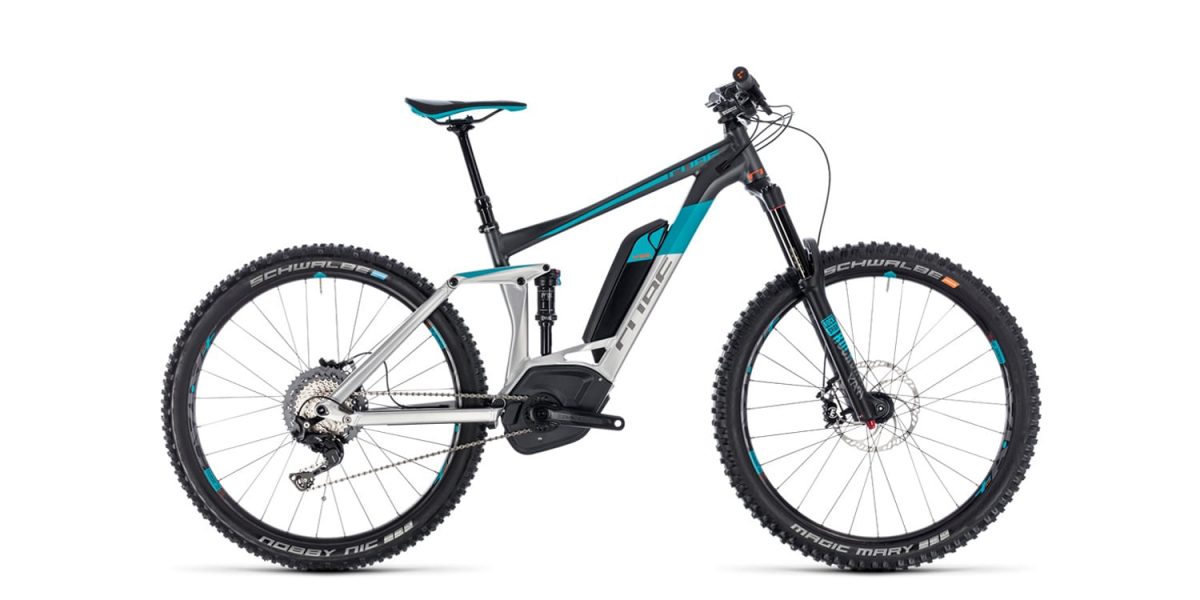











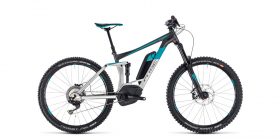
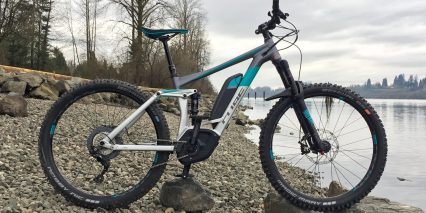
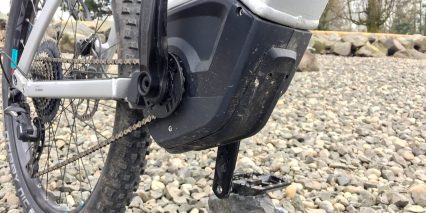
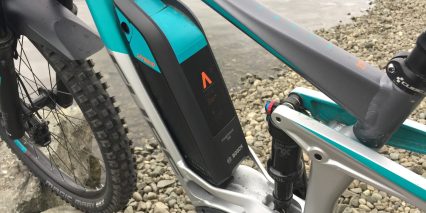
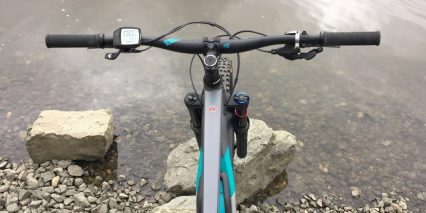
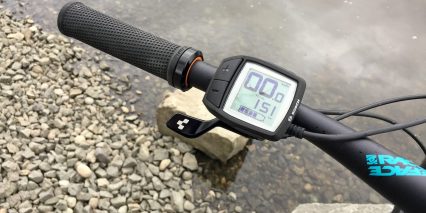
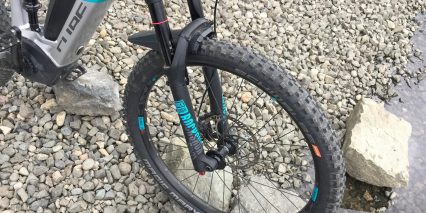
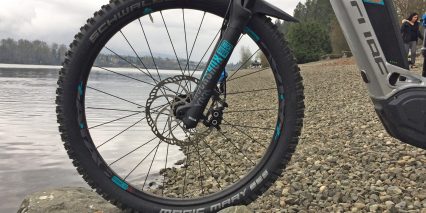
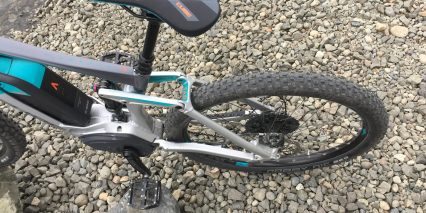
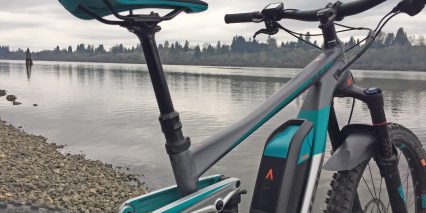
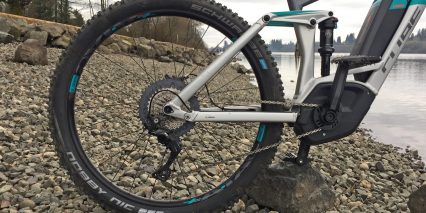
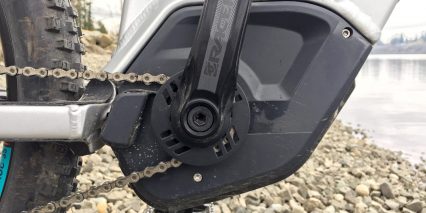

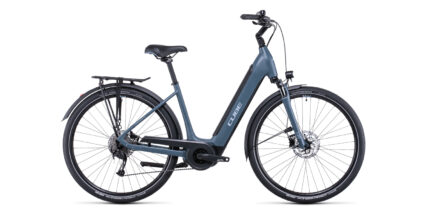
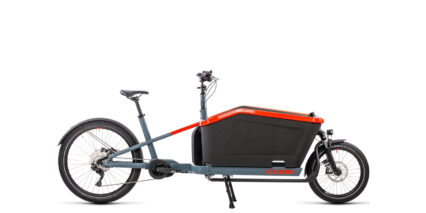
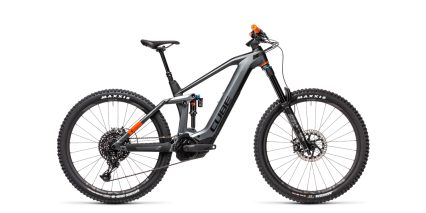
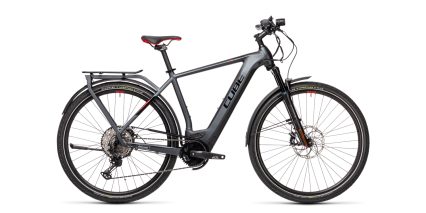
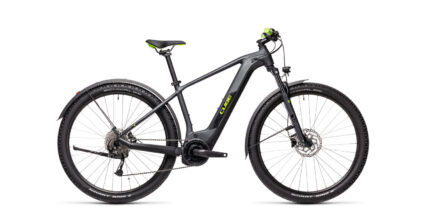
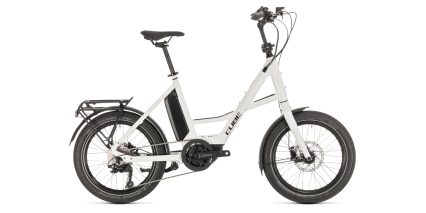
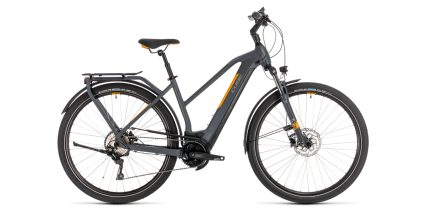
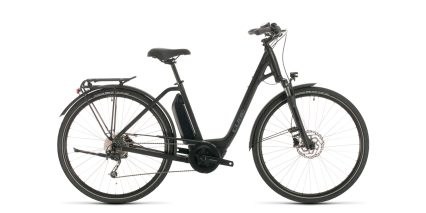
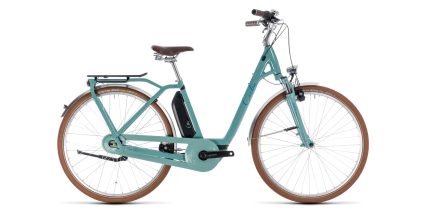
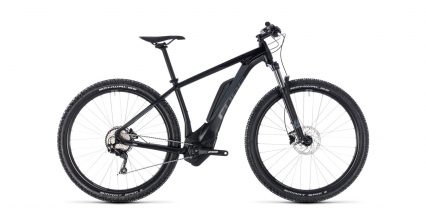
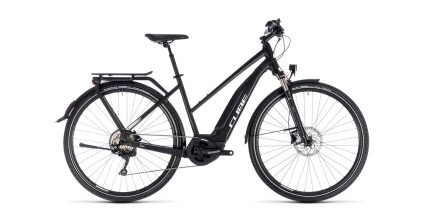
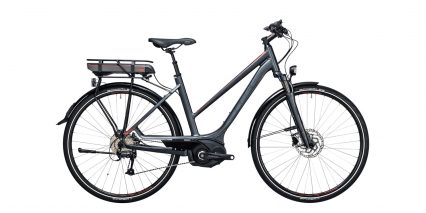
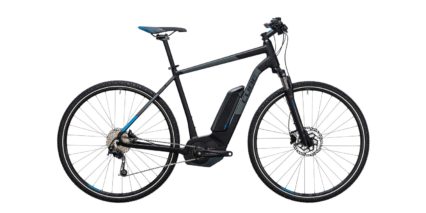
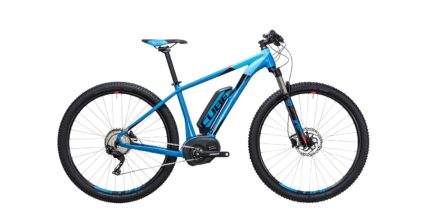
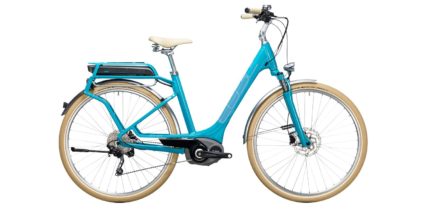
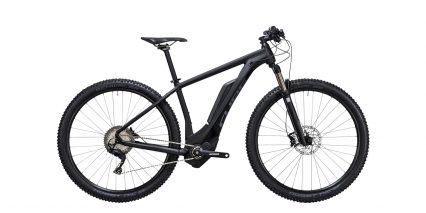
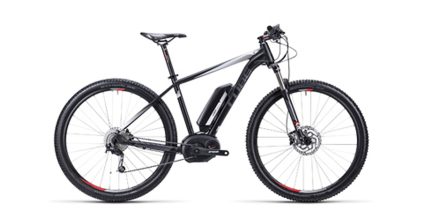
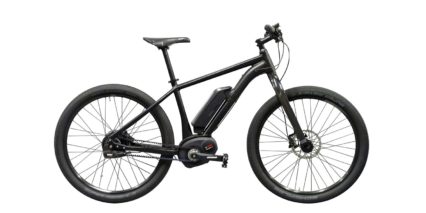
Be the First to Post a Comment